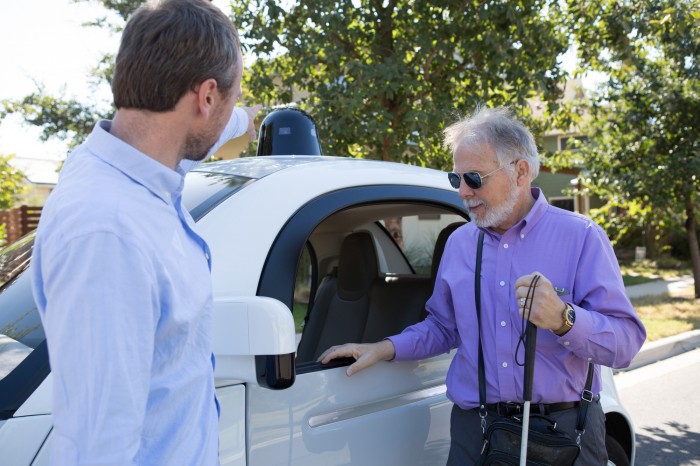Alphabet Sets Up a New Company to Commercialize Autonomous Car Technology

Alphabet’s self-driving car technology is a small step closer to working as a chauffeur—the project will now operate as an independent company called Waymo inside the holding corporation created out of Google last year. When the technology might be ready to drive people around remains unclear.
At a briefing in San Francisco, John Krafcik, an experienced auto executive who has led the project since September 2015 and is now Waymo’s CEO, said the company would seek to bring self-driving technology to market in multiple ways.
“We can imagine our self-driving technology being used in lots of areas—in ride sharing, in trucking logistics, even personal vehicles,” he said. Krafcik said those efforts would not involve Waymo making vehicles itself, but declined to say anything about what kinds of partnership and licensing deals his company might strike, or when he expected to put the technology into real use.
Krafcik also confirmed reports that he has reversed the project’s earlier stance that self-driving technology should be deployed in vehicles lacking steering wheels and pedals. But he said the company remains committed to the idea that it is unsafe to deploy self-driving technology that sometimes requires a human to take over.
“We are absolutely all in 100 percent on fully driverless solutions,” said Krafcik. “We have found in our past that there are just fundamental issues with that handoff between the software and the human.”
In tests several years ago, Google found that employees who were given a chance to test self-driving prototypes became dangerously complacent (see “Lazy Humans Shaped Google’s New Autonomous Car”).
Waymo’s position against what is called partial autonomy puts it at odds with others working on autonomous car technology, such as Tesla (see “10 Breakthrough Technologies 2015: Autopilot”).
Waymo’s debut comes at a time when Alphabet’s lead in self-driving technology is narrowing.
The project began inside Google’s X research lab in 2009, and its prototypes have covered more than two million miles on public roads. Waymo today shared a video of its first test on public roads without a safety driver inside the vehicle ready to take over, in which a blind man rode in a prototype in Austin, Texas. But established auto companies such as GM, and startups such as Uber, now have sizable self-driving car projects of their own.
Although Alphabet's project is widely seen as the most advanced in the world, the company faces a more complex route to commercialization because it has no existing auto or transportation business (see "Alphabet's Self-Driving Car Wizard Picked a Great Time to Quit").
Carmakers such as Ford and GM could simply slot their self-driving technology into existing production lines. Ride service companies Uber and Lyft say they will add autonomous vehicles to their existing fleets of cars serving customers. Uber is already giving rides in its self-driving prototypes in Pittsburgh (see "My Self-Driving Uber Needed Human Help").
Keep Reading
Most Popular
Large language models can do jaw-dropping things. But nobody knows exactly why.
And that's a problem. Figuring it out is one of the biggest scientific puzzles of our time and a crucial step towards controlling more powerful future models.
How scientists traced a mysterious covid case back to six toilets
When wastewater surveillance turns into a hunt for a single infected individual, the ethics get tricky.
The problem with plug-in hybrids? Their drivers.
Plug-in hybrids are often sold as a transition to EVs, but new data from Europe shows we’re still underestimating the emissions they produce.
Stay connected
Get the latest updates from
MIT Technology Review
Discover special offers, top stories, upcoming events, and more.